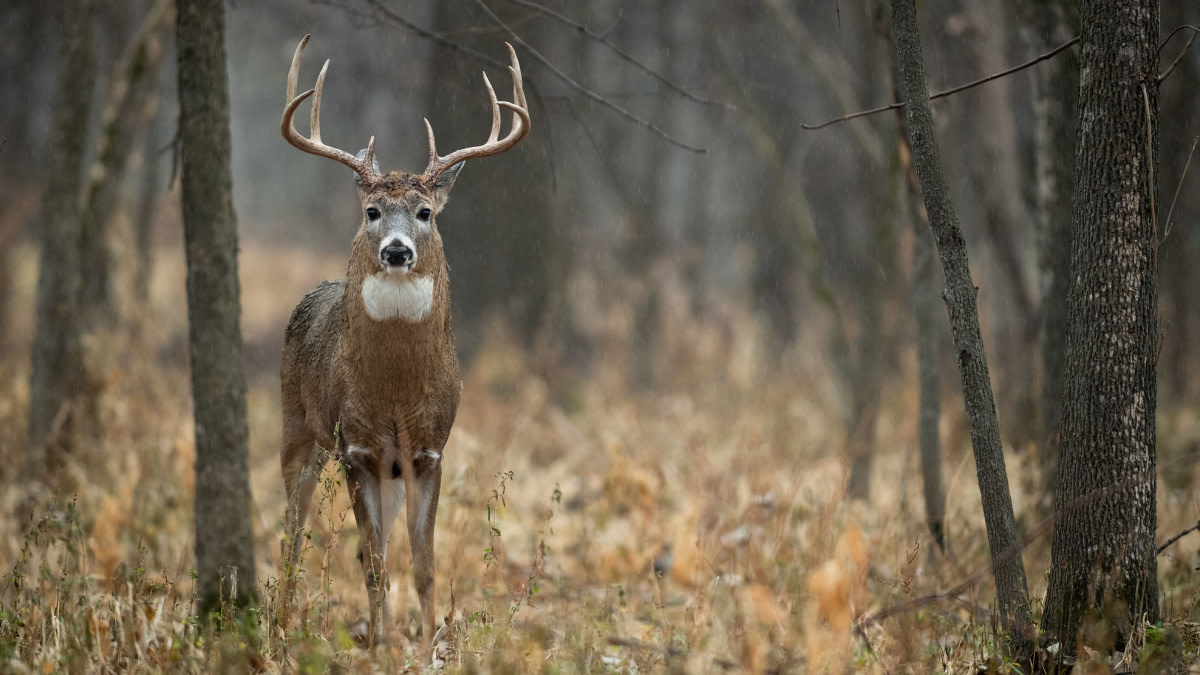
The downside to the latter part of November is that the wild chase-fest of a few weeks ago is largely over. With the dependable chaos of the early part of the rut in the rearview mirror, it can feel like a lost cause to try to tag a mature buck by the time the calendar flips to December.
Don’t lose all hope, though. One conception-date study conducted in Illinois revealed that the mean date for does getting lucky was November 10. Another multi-year study conducted in Pennsylvania measured fetal growth in road-killed does to determine conception dates. It found that 90% of the 6,000 does were bred between mid-October and mid-December.
In other words, the rut is still on and you can still kill a buck—you just need to alter your expectations and strategy.
Lockdowns and Lost Ruts
The diminished deer activity in the back half of November tends to be explained away either through “lockdown” or the “rut is just flat out over.” Both likely contribute to the feeling that the woods are empty, but there’s undoubtedly more to it.
For starters, most hunters place a heavier emphasis on hunting early November, and with that effort comes more encounters—and more social media posts about rut behavior. The perception for many is that it’s on and then suddenly off. But a part of that is simply due to participation.
It’s also no coincidence that the presence of gun hunters in the woods spawns a hangover period of diminished deer activity. The deer that haven’t been killed have undoubtedly dodged enough orange to be a little leery of running through a cut cornfield at noon in search of does. And does, which despite their seeming disappearance, are still the lynchpin that holds the whole thing together for hunters looking to tag on Thanksgiving.
Volume Hunts
Tyler Jones, who co-hosts The Element Podcast, says that his strategy, whether he’s in Texas or Kansas, always involves the ladies: “After the peak of the rut, it seems like the does revert right back to food sources,” Jones said. “Instead of looking for bucks on the typical funnels and pinch points, I try to find reliable does in out-of-the-way food sources. When I do, I go into observation mode to see who is still checking them.”
Jones used this strategy a few years ago in Kansas to arrow a giant buck in the back corner of a wheat field. Unlike the nonstop mobile hunting that dominates his early rut hunts, he tends to settle into a spot and hunt it for days. This goes against typical deer advice, but allows him to monitor a specific group of does and wait out a buck that might only make his rounds there every few days, or in the case of the Kansas buck, on the fifth day of sitting that specific spot.
This is possible, Jones notes, in part due to the reality that many hunters hang up their hats long before December hits.
“It seems like in a lot of states Thanksgiving marks the end of deer hunting for most folks,” Jones said. “If you hunt public land or pressured private ground, this can be the ‘in’ you need to tag out during the last few days of any real rutting activity.”
Last Call
It’s common to hear hunters talk about the last few estrus does and the big bucks that seek them out. My personal hunting experience has never made me a believer, but as an experiment I left several cameras up on a property all through November in 2015.
When I checked them well after the season was closed, I was shocked to see that—by far—the best mature buck activity in daylight was in the second half of November. Specifically, November 20 to 25 was on fire. What really stung was the fact that I hunted that little Wisconsin property at the beginning of November with hardly a forky sighting to show for it.
But, later in the month, when I was long gone and not thinking much about those swamp bucks, they were most killable. I have no doubt that the hunting during those two weeks would have been better than any other time of the season. Was that due to a hot doe or two holing up in my spot? Maybe. Or were those mature bucks just desperate to make the rounds during last call to see if they could find one more amenable doe?
The explanation for why it happened isn’t as important to me as the fact that it did happen. In reality, it probably happens every few seasons or every year for that matter. And it probably happens where you hunt too, so don’t write off the end of November as a lost cause just yet.
Feature image via Matt Hansen.





